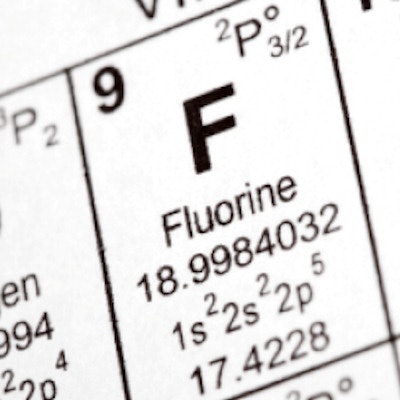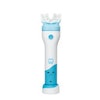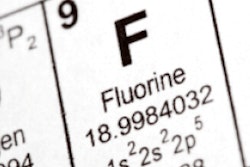
Data support the use of fluoride in toothpaste to prevent decay, but there is no standardization of fluoride levels in toothpaste. Researchers performed an updated, comprehensive review to see if the level of fluoride in toothpaste affected its ability to fight tooth decay.
The researchers included studies involving children, adolescents, and adults in their review. For studies focused on the primary teeth of young children, brushing with a toothpaste containing 1,500 parts per million (ppm) of fluoride reduced the amount of new decay when compared with nonfluoride toothpaste (Cochrane Database of Systematic Reviews, March 4, 2019).
"Evidence for the effects of different fluoride concentrations is more limited, but a dose-response effect was observed for D(M)FS in children and adolescents," wrote the authors, led by Tanya Walsh, PhD, of the division of dentistry in the Faculty of Biology, Medicine and Health School of Medical Sciences at the University of Manchester in the U.K.
Fighting tooth decay
Toothpaste containing fluoride is generally recommended to help prevent tooth decay and other oral health issues. However, the amount of fluoride in toothpaste is not standardized, and there is no minimum fluoride concentration. Typically, toothpaste purchased over the counter might contain 1,000 to 1,500 ppm of fluoride, according to the study authors. The maximum permissible fluoride concentration for a toothpaste varies according to age and country. Higher concentrations are rarely available over the counter and are classed as a prescription-only medicine.
The researchers wanted to assess the effects of toothpaste containing differing fluoride strengths on preventing tooth decay in children, adolescents, and adults.
They searched electronic databases for studies published between 1955 and 2014 involving toothpaste with fluoride. They ultimately found 96 studies overall:
“The stronger the fluoride concentration, the more decay is prevented.”
- Seven studies with 11,356 randomized participants reported the effects of fluoride toothpaste up to 1,500 ppm on primary teeth.
- One study with 2,500 randomized participants reported the effects of 1,450 ppm toothpaste on both primary and permanent dentition.
- A total of 85 studies with more than 48,800 randomized participants reported the effects of toothpaste up to 2,400 ppm on the permanent teeth of children up to 18 years of age.
- Three studies with 2,675 randomized participants reported the effects of up to 1,100 ppm toothpaste on the permanent teeth of adults.
Less new decay occurred when toothbrushing with toothpaste containing 1,000 to 1,250 ppm or 1,450 to 1,500 ppm fluoride compared with nonfluoride toothpaste, the review authors reported. They also found that using toothpaste with 1,450 to 1,500 ppm fluoride reduced the amount of new decay more than 1,000 to 1,250 ppm toothpaste did.
In permanent teeth of adults, 1,000 or 1,100 ppm toothpaste reduced decay compared with nonfluoride toothpaste.
The studies reported that in primary teeth of young children, brushing teeth with a toothpaste with 1,500 ppm of fluoride reduced the amount of new decay when compared with nonfluoride toothpaste. However, the amount of new decay was similar to that of participants using 1,055 ppm or 550 ppm fluoride toothpaste. The studies reported a slight reduction in the amount of new decay with 1,450 ppm toothpaste compared with 440 ppm fluoride toothpaste.
High-certainty evidence
The authors noted that there is high-certainty evidence that toothpaste containing 1,000 to 1,250 ppm fluoride is more effective than nonfluoride toothpaste. However, they commented that for other fluoride toothpaste strengths compared against each other or nonfluoride toothpaste, there are too few studies with too few participants to have any clarity about the effects.
Thus, they concluded that there are benefits of using fluoride toothpaste at specific strengths to prevent tooth decay when compared with nonfluoride toothpaste.
"The stronger the fluoride concentration, the more decay is prevented," they wrote.


















